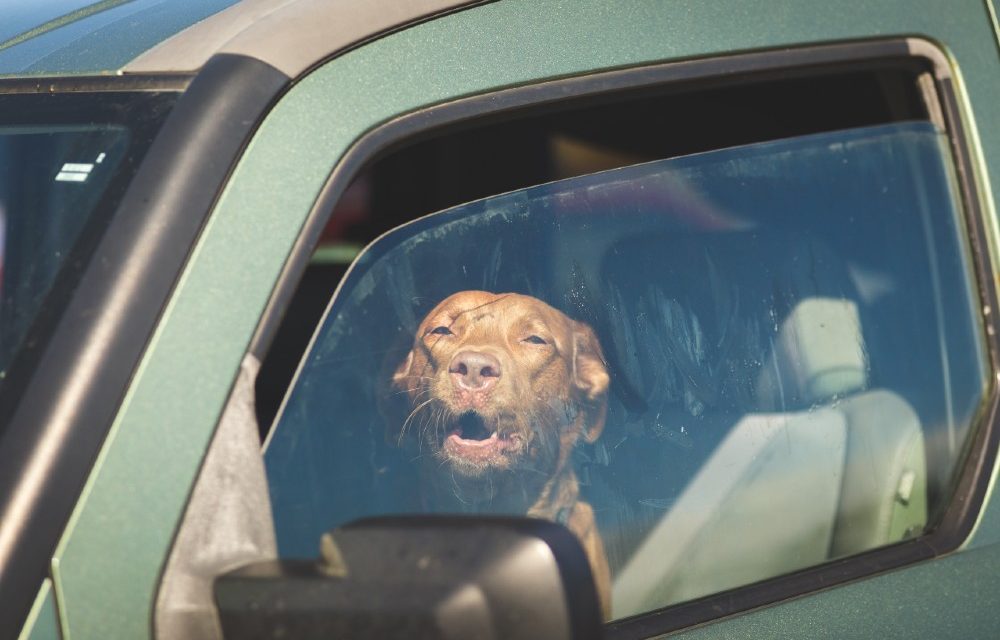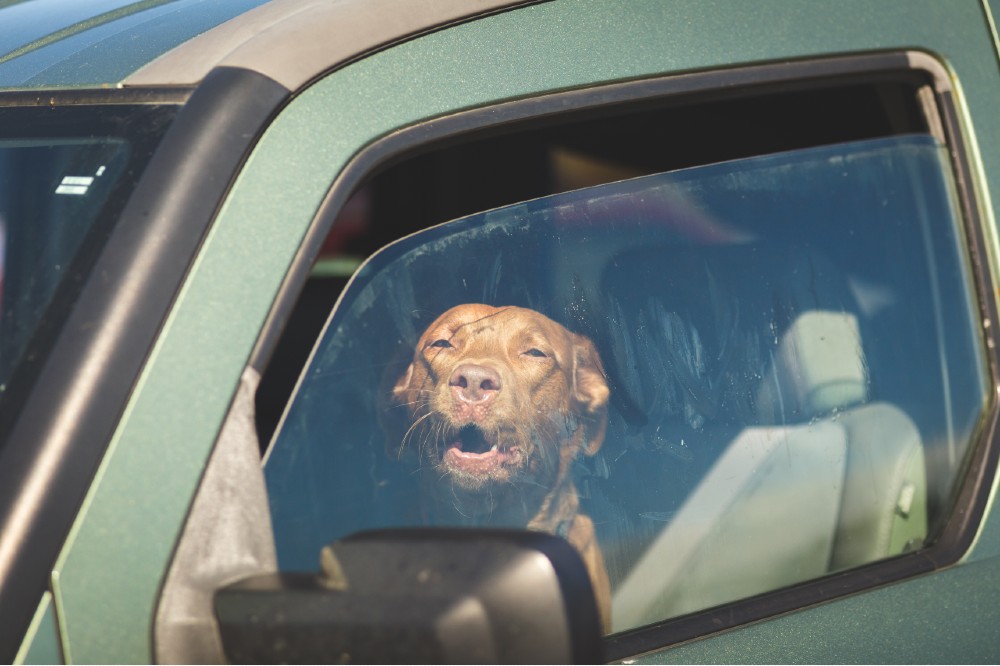While summer’s sunny skies and heat often are sources of joy for people, those same conditions can prove dangerous – and even deadly – for dogs and other animals.
Despite public service announcements and animal welfare campaigns, too many people remain unaware of the often fatal danger of leaving animals in parked cars on hot days for any amount of time – with news reports inundated in the past few months of animals who have tragically lost their lives while waiting for their owners to run errands.
But other dangers also lurk outside for beloved pets and their unsuspecting guardians – including heat stroke, dehydration, and burned paws.
Here are four important points that pet parents should know and tips they should follow to keep their furry loved ones safe during the summer months, as well as some expert advice on immediate steps to take in the face of an unexpected emergency.
4. Unattended Pets and Parked Cars Should NEVER Mix.
On an 85-degree day, the temperature inside a car – with the windows cracked open – can exceed 100 degrees Fahrenheit within 10 minutes, according to the Pennsylvania AAA Federation.
Even cooler days are within the organization’s “danger zone,” with a car’s interior capable of reaching 104 degrees within 30 minutes on a balmy 70-degree day.
Pets locked away in those heat traps can suffer irreversible organ damage.
The Animals in Distress Law, passed in 2018, allows public safety officers to remove dogs, cats, and other live animals from unattended vehicles (as well as other enclosed areas, such as sheds, trailers, or storage boxes) if they have immediate concerns about animals’ safety – including breaking windows to get the animals out.
Many states also have Good Samaritan laws that will protect passersby from lawsuits should they break into your car to save your pet’s life.
Bottom line: Never leave your pet unattended in a parked car.

(Photo Credit: Pennsylvania AAA Federation)
3. Hot Pavement Can Mean Burned and Painful Paws.
If placing your palm for 10 seconds against the pavement outside is uncomfortable for you, it’s definitely going to be too hot for your dog or cat to safely walk outside.
On a 70-degree day, the sun’s reflection can heat surfaces – including concrete, brick, or black asphalt – up to 125 degrees.
Symptoms of first degree burns include swollen or red paw pads or skin, while blisters indicate a second-degree burn and charred-looking skin would be a third-degree burn. Dogs who lick or chew their feet or who limp also may have suffered from pavement burns, which can take anywhere from a week to several weeks to heal, according to veterinary experts.
To save your pup from burned and painful paws, limit summer jaunts to the early morning and late evening when temperatures are cooler, and also consider shortening your routine distances, depending on your dog’s behavior. As an added precaution, allow your dog to walk and go to the bathroom on grass – rather than pavement.
Dog booties, paw wax, or peel and stick pads also can help protect your dog’s paws from hot surfaces, although different dogs have different tolerances for such products, according to the Shallowford Animal Hospital.
It is important that dogs still receive regular exercise and attention, however. To keep them both healthy and happy, sub in some quality indoor time, which can include building an obstacle or agility course in the home for your dog, figuring out dog puzzles together, or hiding and letting your dog seek out treats or toys. Fetch also is almost always a winner for many canine companions.
2. Being Informed Can Save Your Pets’ Lives in an Emergency
Animals who go outside with you for any length of time during the summer months should never be confined to areas only of direct sunlight, but should have access to shade and a constant, clean source of cool water. It’s crucial to never leave an animal tethered or chained outside, too, as animals left out in the summer sun have died from heat exhaustion and dehydration.
Senior animals, overweight animals, animals with underlying conditions such as heart or respiratory diseases, and breeds with short muzzles – including pugs, Shih Tzus, boxers, and bulldogs –generally are more susceptible to heat stroke.
Signs of heat stroke in animals include heavy panting, glazed eyes, rapid heart beats, difficulty breathing, excessive thirst, and drooling.
If you suspect your animal is suffering from heat stroke, gently but quickly move the animal inside to an air-conditioned room, if possible, or otherwise to a shady spot outside. Apply wet towels to the animal’s body and run cool – but not cold – water over the body if possible. Animals should be offered small amounts of water or ice cubes to lick.
Extreme symptoms — including seizures, unconsciousness, or a measured temperature exceeding 103 degrees Fahrenheit for dogs – require immediate veterinary care.
1. Other Suffering Pets Need Your Help, and Your Voice, Too.
Speak up and do whatever else is needed if you see animals locked in a car on a hot day or otherwise exhibiting symptoms of distress; your compassionate action could save their lives.
Have key information available when dialing 911, a police department’s non-emergency number, or your local animal control services – including the car’s make, model, and license plate number.
It’s also a good idea to save these numbers to your phone or have them written down somewhere in your own car for ready access if needed.
Concerned witnesses also can visit any businesses near the suffering animal and ask that the managers make an announcement to try to find the animal’s owner, according to a tip sheet from the Humane Society of the United States.
You can also ask your favorite retailers to post preventative signs in conspicuous spots, asking customers to please not leave their animals in cars while running errands.








